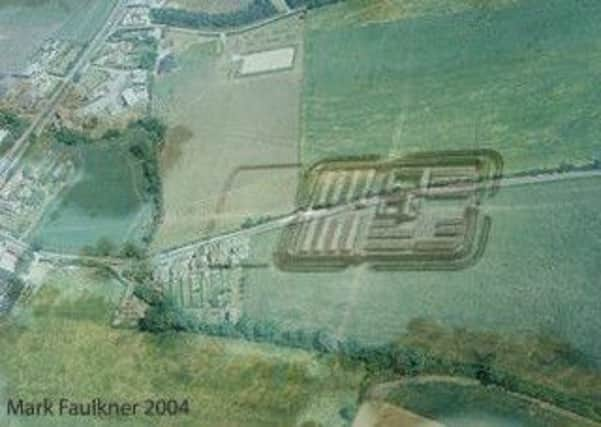Your article: Talk on Iron Age and Roman archaeology of Hayton area


The chariots, swords and spears found in their cemeteries across the East Riding hint at the warlike character of these people.
The South Cave weapons cache of 33 spears and 5 swords in highly decorated sheaths, buried at the time of the Roman invasion of what is now the Yorkshire region in AD 71 supports this idea. Around about this time, the invading Roman army built a fort at Hayton in a strategic position between the uplands of the Yorkshire Wolds and the lowlands of the Vale of York. The fort was discovered in 1974 by Professor J.K. St Joseph who was undertaking aerial photography in the region and it was excavated in the following year by Stephen Johnson.
Advertisement
Hide AdAdvertisement
Hide AdAfter the discovery of much Roman tile ploughed up by a farmer in a field in Hayton in 1993, a team led by Dr Peter Halkon, of Hull University, and Professor Martin Millett, of Cambridge University, began a detailed study involving hundreds of volunteers and students from a number of universities exploring a 3x3km block of land focused on Hayton village, which continued until 2011.
This survey, one of the most detailed yet carried out on an area of Roman Britain, used many different techniques including aerial photography, field walking and geophysical survey, as well as excavation. It revealed exciting discoveries including an extensive settlement that built up along the main Roman road that ran between the Roman Brough and York, Roman buildings including a bath house and timber lined well containing a unique piece of Roman decorated furniture and new information about the Roman fort. Extensive evidence for Iron Age activity including round houses, enclosures and farmsteads was also found. The research of over forty experts has been gathered together into two volumes covering 588 pages, entitled: “Hayton, East Yorkshire: Archaeological Studies of the Iron Age and Roman Landscapes”, edited by Peter Halkon, Martin Millett and Helen Woodhouse, which have just been published by the Roman Antiquities Section of the Yorkshire Archaeological Society.
On 11 December at 7.30pm in the village hall, Hayton, Dr Peter Halkon, Professor Martin Millett and Dr Helen Woodhouse will be talking about the results of the fieldwork and artefact research focussed on Hayton in their new book. This will be available at the launch event at £30, or by mail order (£30 + £5.60 p&p per set), cheques payable to RAS Roman Antiquities Section, YAS from: RAS YAS, Rarey Farm, Weaverthorpe, Malton, YO17 8EY.